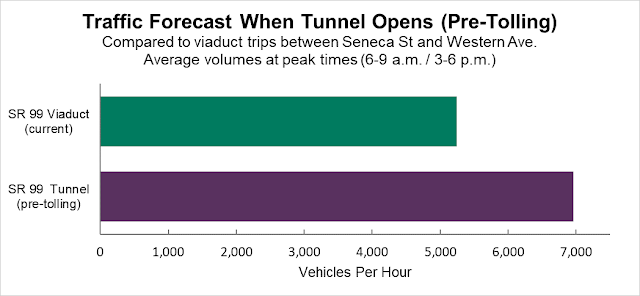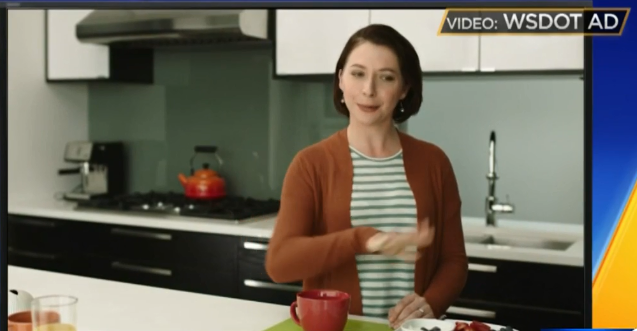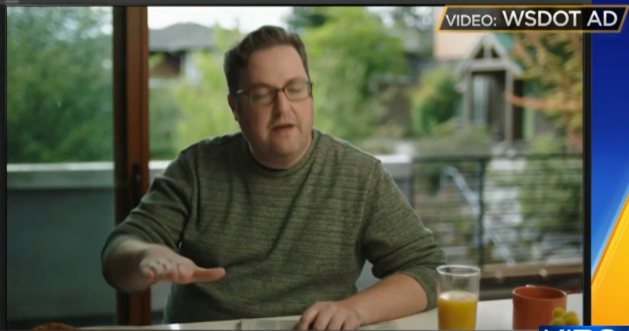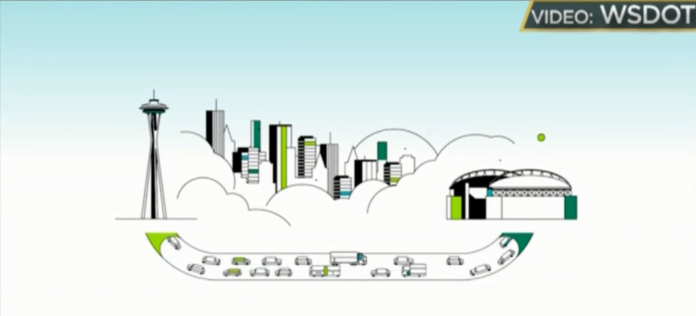The Washington State Department of Transportation (WSDOT) is spending $4.4 million begging you to drive under Downtown Seattle. A marketing campaign with expensive TV spots and billboards wants to ensure that the new tunnel is full of motorists when it opens. KIRO 7 reports that the $4.4 million will be spent on advertising for people who apparently haven’t been paying attention for the last decade to the fact that the highway they use will no longer allow them to exit directly into Downtown.
Meanwhile, the viaduct closure to connect the existing SR-99 to the tunnel, though predicted to be three weeks of traffic hell, has turned out to be little more than a blip. People are driving less and adjusting their commuting patterns and traffic didn’t seem much worse than a normal day even without one of the two major freeways through Downtown Seattle. But continuing those patterns after SR-99 reopens would render the new tunnel mostly obsolete — not to mention damaging its funding plan.
Partially, this thirst for drivers is driven by a funding plan backed by tolling revenue. WSDOT’s financing plan (even before the overruns climbed to $223 million with no sign of stopping) relies on $200 million in tolling profits. That tolling largesse is extracted from more than $1 billion in tolls projected over the next 25 years, due to considerable tolling overhead and maintenance and financing costs.
When it opens in early February, the tunnel will be free to drive through, with tolling starting at a yet-to-be-specified date this summer. WSDOT predicted traffic will actually increase significantly (by over a third!) compared to current viaduct numbers at rush hour during the untolled period.

Perhaps WSDOT wants to get people hooked on the convenience of the “tunnel direct” so they continue to use it after a modest toll is put in place: $1 to $2.25 with WSDOT’s Good-To-Go pass and more without one, but undoubtedly traffic will go down after a toll is put in place, and many of those vehicles will end up on city streets.
WSDOT’s excuse for spending your tax dollars inducing demand for driving and worsening greenhouse gas emissions is that the ad campaign is really about avoiding confusion and frustration among drivers who somehow missed that a tunnel will work differently than the viaduct did.
WSDOT spokesperson Emily Glad laid out the reasoning to KIRO. “The majority of people didn’t know that the tunnel would have different entrances and exits than the viaduct,” Glad said. “One of our main target audiences is reaching people who use those exits. We don’t want to risk confusion and frustration from drivers who are unaware of the major route change.”
Maybe, but the advertisements don’t explain exactly how the portals work beyond the catchphrase “Stadiums to Space Needle” — although it does direct people to the “99 tunnel” website. What the ad campaign fundamentally does is encourage people to drive and portrays that as a fun, easy thing to do under and through Seattle’s central core.
Has WSDOT or any state or local agency ever commissioned a $4.4 million marketing campaign to promote transit or biking or walking? It sure doesn’t seem like it.
When Sound Transit spent around $1 million on an opening day “party” and a media campaign for the University of Washington and Capitol Hill stations, it was a front page story on The Seattle Times, even though Sound Transit says they recouped the money from additional fares. When a light rail station opens, it’s free for a day and not several months.

It’s a thing, WSDOT’s ad repeatedly extolls, as their actors perform a new wave motion, that is apparently supposed to go viral making driving in a $4 billion boondoggle tunnel hip.

It remains to be seen exactly how popular the tunnel will be with drivers. The cost overruns associated with the tunnel (and the five-year delay building it) and litigating who pays for them are both definitely things though.
Ryan Packer has been writing for The Urbanist since 2015, and currently reports full-time as Contributing Editor. Their beats are transportation, land use, public space, traffic safety, and obscure community meetings. Packer has also reported for other regional outlets including BikePortland, Seattle Met, and PubliCola. They live in the Capitol Hill neighborhood of Seattle.


